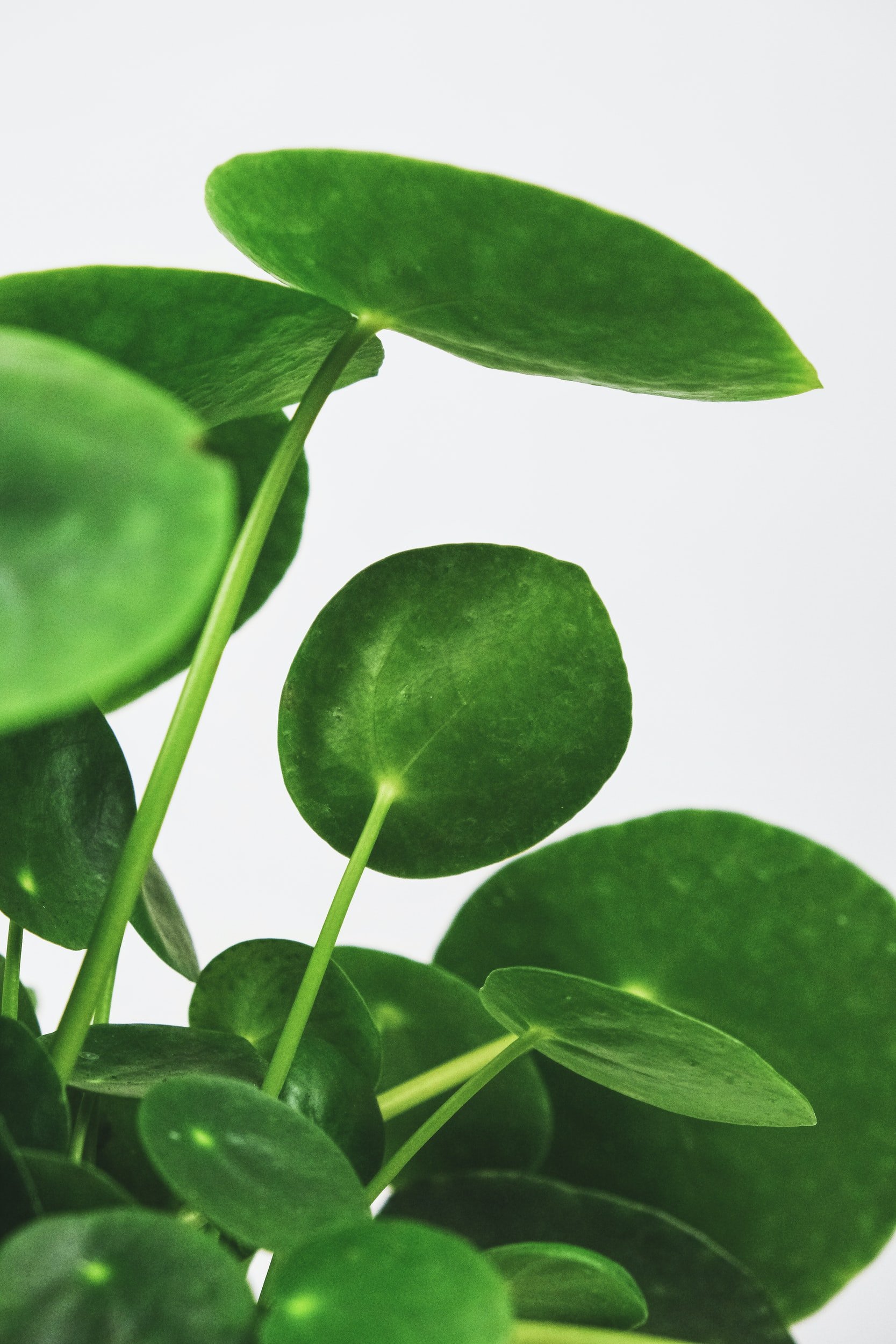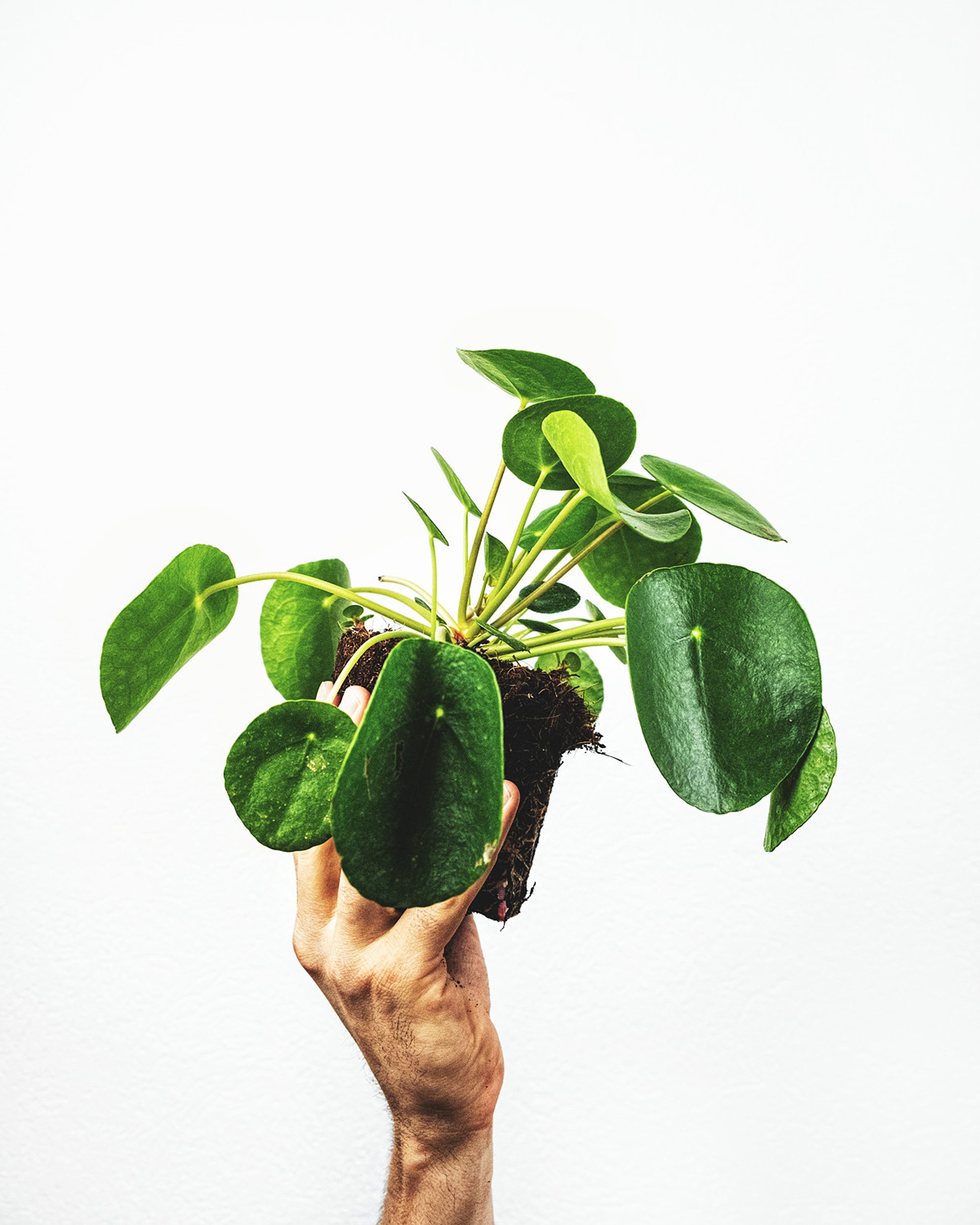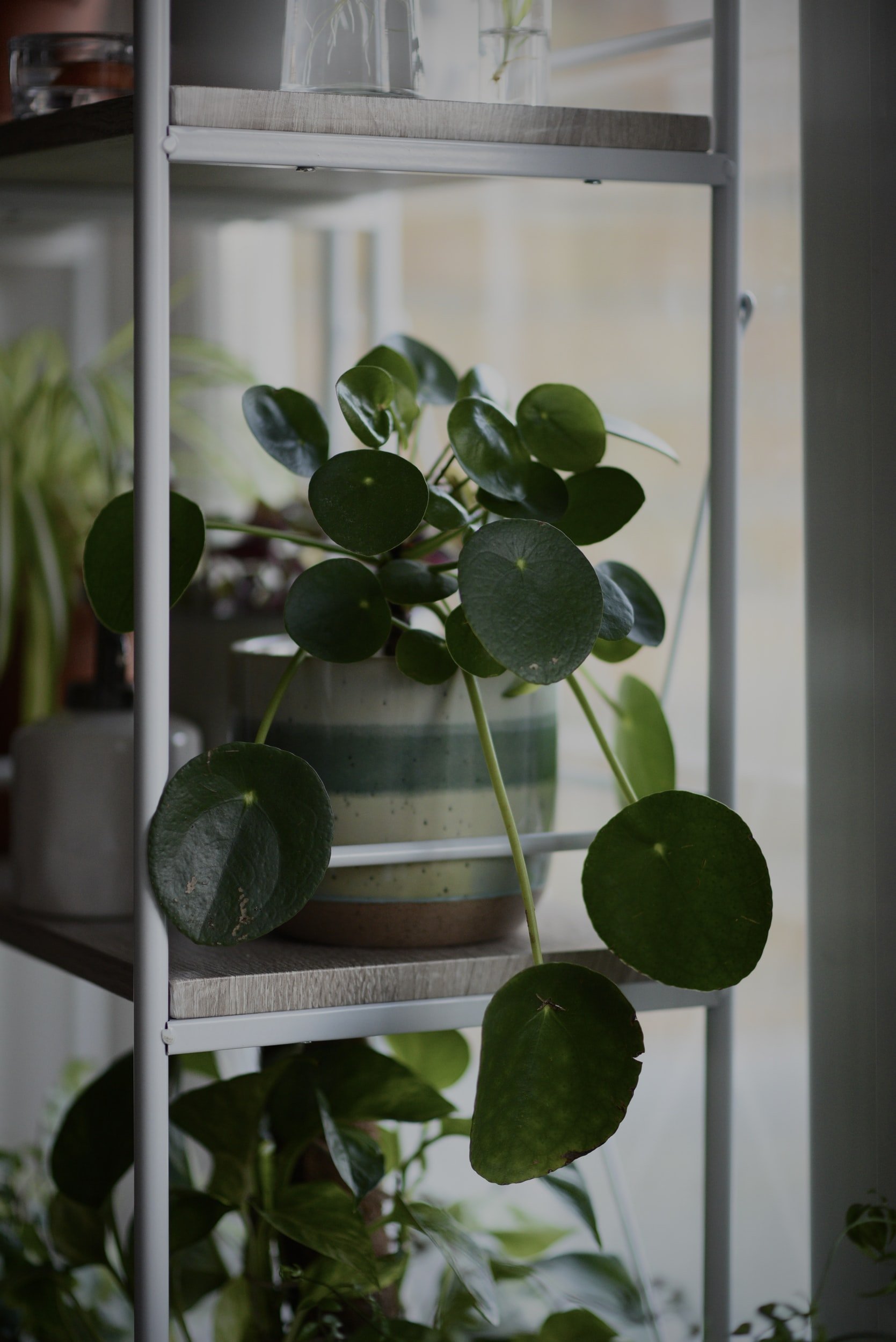Plant Profile
Pilea Peperomiodes
a.k.a. Chinese Money Plant // Friendship Plant // Pancake Plant // Pilea
The Pilea Peperomioides, commonly known as the Chinese Money Plant, was first brought back to Europe by a Swedish missionary from Yunnan, China in 1946. This houseplant is very distinctive with its round, coin shaped leaves and is said to have good feng shui, bringing good luck and fortune to its owner. It is also sometimes called the Friendship Plant due to it being easy to propagate and share with friends. The Pilea is fast growing and is reasonably simple to care for, making it a popular choice.
Top Tips
✔ Rotate your plant regularly to ensure even growth on all sides.
✔ Dust the leaves frequently
✔ Remove any old foliage to promote new growth
Plant Care
-
The Chinese Money Plant prefers bright, indirect light; placement slightly away from a window is ideal. Too little light can cause the leaves to fade and curl whilst too much direct sunlight can cause burn marks on the leaves, so finding the perfect spot is key in order for this plant to thrive.
-
Allow your Pilea to dry out between waterings and make sure it is not over-watered.
-
The Chinese Money Plant prefers slightly drier environments so there is no need for additional misting.
-
Feed your Chinese Money Plant once a month when it is actively growing during the Spring and Summer months to help keep its leaves green and vibrant. Water the plant and allow it to dry slightly, then the following day use a diluted liquid organic fertiliser to feed the plant.
-
The Chinese Money Plant thrives in average room temperatures (15 - 25°C). The most important thing to note is that the plant most definitely does not like extreme temperature changes, so try to maintain the room temperature as much as possible.
-
This plant is not toxic.
-
One of the main reasons the Chinese Money Plant is popular is because it is so easy to propagate. If your plant is healthy it will regularly and naturally produce baby plants on its stem and from its roots in the surrounding soil.
The baby plants growing in the soil are the easiest to remove, once they have grown to around 5-7cm in height you can remove their connection to the mother plant. Make sure to cut the plant beneath the soil so that you can retain the roots the baby plant has grown, then simply pot these into a new pot using moist soil.
If the mother plant is producing baby plants on its stem, cut these using a sharp knife and place into a glass with clean water and allow them to grow their own roots. Once they have grown a root system pot them using moist soil.
-
Avoid re-potting the Chinese Money Plant too regularly. You’ll be able to tell when the plant needs to be repotted when the water is draining slowly because the roots are filling the container or when the plant is growing slower than usual due to the roots not being able to be nourished.






Quick Plant check up
Brown leaf tips
These can be caused by under watering or low humidity, so make sure to adjust these accordingly. This issue can also be the result of too much direct sunlight that has burnt the leaves, if this is the case move the plant to a different spot.
Drooping leaves
This can also be caused by the plant being under watered, check if the soil is dry - if so your plant needs a drink!
Domed leaves
This may be the result of your plant receiving too little light, make sure to position the plant in a place where it’ll receive bright, indirect light.

